
Is there scientific proof for the existence of chakras and the subtle body? What does physics tell us about the existence of subtle body and psychic phenomena? In this article, Simona looks at the mysteries of Quantum Physics.
The most beautiful thing we can experience is the mysterious. It is the source of all true art and science. ~Albert Einstein
Quantum physics is the most precise theory we have ever came across. The theory is astounding in the accuracy of its predictions (Hearnd, 2008). Quantum physics has revolutionized our world. All of the electronics that we use daily and cannot imagine our lives without is based on quantum physics. One third of our economy depends on products designed with quantum physics theory (Rosenblum, Kuttner, 2006). And yet, this most successful theory in all of science is also very strange and mysterious.
Physicist Niels Bohr said: “Anyone who is not shocked by quantum theory has not understood it”. Why is quantum physics so shocking? Because quantum experiments display mysterious properties which challenge our physical world view (Zukav, 2001). Quantum physics challenges our assumptions that there is an objective classical reality “out there”, independent of us. It challenges the idea of locality, that the only way that objects can be influenced is through direct contact. It challenges the idea of causality that the arrow of time points only in one direction establishing a cause→effect sequence. It challenges the idea of continuity and determinism. Quantum physics challenges all of the basic assumptions of Newtonian physics. It connects consciousness with the physical world and shows that the quantum world is interconnected. It is because of this connection that quantum physics lends itself to various interpretations and theories of consciousness.
In this paper I will first present the central mysteries of quantum physics, second, I will present some of the interpretations of quantum physics and third, I will present some of the quantum theories of consciousness. I will conclude the paper with a discussion of the feasibility of quantum physics as a theory for understanding consciousness and possible limitations of quantum physics in our understanding of consciousness.
Mysteries of Quantum Physics
The mysteries of quantum physics revolve around the concepts of: (a) wave-particle duality, (b) measurement, (c) uncertainty, and (d) entanglement.
Wave-particle Duality
In the early 1800’s using a double slit experiment, Thomas Young proved that light is wave like (Zukav, 2001). In front of a light source, Young placed a screen with two vertical slits in it. On the other side of the double slit screen was a wall. When the light was on and both of the slits were open, the light produced an interference pattern which registered on the wall behind the screen. Interference patterns result when waves interfere with each other – in some places they reinforce each other and in some places cancel each other out. Thus, Young’s double slit experiment showed that light is wave like.
However, many years later, using a photoelectric effect, Einstein demonstrated that light is made of particles which he called photons. This created a problem because a wave cannot be a particle and a particle cannot be a wave. Thus one of the mysteries of quantum physics is the wave-particle duality.
Measurement
In quantum physics a physical system is described by a wave function. The wave function is a mathematical representation of possible states of the physical system; it evolves into a linear superposition of different states (Zukav, 2001). The actual measurement always finds the physical system in a particular state. The problem of measurement can best be demonstrated through an experiment that is known as Schrödinger’s cat paradox. In this experiment a cat is placed in a box. Inside the box is a vial with poisonous gas. This vial will either be broken, instantly killing the cat or the vial will not be broken. A random event (the decay of a radioactive atom) determines weather the vial will be broken or not. There is no way of knowing, other that looking into the box, what happens in the box. The question is what happened inside the box. According to classical physics the cat is either dead or alive. According to quantum physics the cat is both dead and alive. It is in a superposition of states. When we open the box and make an observation, thus we learn the condition of the cat, the superposition is lost and the cat is either dead or alive. As an observation is made the superposition materializes in only one possibility. The observation or the measurement itself affects the outcome, such that the outcome actually does not exist until we make a measurement. This is considered to be the most sticky problem of quantum physics because it suggests that reality does not exist until we make a measurement or observation.
Uncertainty
The uncertainty principle was developed by Werner Heisenberg and the principle states that it is impossible to know both the position and momentum of a quantum particle. When we measure the position of an electron it will destroy information about the electrons momentum; our observation disturbs it (Zukav, 2001). Whatever we are observing can have momentum and it can have a position, however we must choose which one we want to know. Thus, Heisenberg said “what we observe is not nature itself, but nature exposed to our method of questioning” (as cited in Zukav, 2001, p. 126).
Entanglement
Entanglement is a term coined by Erwin Schrödinger and refers to the interconnectedness of quantum particles. It is the central characteristic trait of quantum physics. Entanglement is best demonstrated in an experiment with a two-particle system with zero spin (Zukav, 2001). The spin of each of the particles in such a system cancels the other. If one particle has a spin up, the other has a spin down, if one has a spin left, the other has a spin right. They always cancel each other out. When two particles with a zero-spin are separated in a way that does not affect their spin and then, using magnetic field, the spin of one particle is purposely changed, the other particle will change its spin as well. Regardless of how far apart the two particles are the change occurs instantaneously - at a speed faster than the speed of light. This is the mystery of entanglement, something that Einstein referred to as “spooky action at a distance”. Einstein was critical of non locality and he wanted to introduce “hidden variables” that would mediate this action at a distance. However, physicist John Bell constructed a theorem, now commonly referred to as Bell’s theorem that proves that there is no reasonable “spooky action at a distance” possible because as the theorem states “no physical theory of local hidden variables can ever reproduce all of the predictions of quantum mechanics” (Wikipedia). Thus, non locality or entanglement is established.
Interpretations of Quantum Physics
To explain the results and findings of quantum experiments, physicists had to create elaborate theories. Quantum theory is not self-evident, or self-explanatory, it needs an interpretation. Some of the interpretations of quantum physics are: (a) Copenhagen interpretation, (b) many worlds interpretation, (c) quantum logic interpretation, (d) complementarity, and (e) consciousness create reality.
Copenhagen Interpretation
Advanced by Niels Bohr, the Copenhagen interpretation is the most prevalent interpretation of the quantum physics. Consciousness, the act of observing is central to the Copenhagen interpretation (Zukav, 2001). It is the observer who collapses the wave function (superposition of states) and a wave of probability then materializes. The Copenhagen interpretation says that quantum theory tells us what we can know about reality rather than reality itself. According to this theory we do not need to know how quantum theory works; all that is needed is that it works. It is not necessary to know how can light manifest as both particles and waves, it is enough to know that it does and to be able to predict probabilities. This interpretation allows the theory to be used without having to worry about what it means.
Many Worlds Interpretation
The Many Worlds Interpretation created by Everett, Wheeler, and Graham, states that whenever the universe faces a quantum choice, the entire universe splits into as many copies of itself as necessary to carry out every possible alternative (Zukav, 2001). We experience only one world, while for every possible quantum choice another world exists so that all probabilities manifest. According to this theory an external observer is not necessary to collapse one of the possibilities contained in the wave function. All of the possible events contained within the wave function do actualize, but in different branches of the universe.
Quantum Logic Interpretation
According to this interpretation we are confused about quantum physics because commonsense assumptions about logic no longer apply when dealing with complementary systems (Radin, 2006). Our logic is structured in a way that a number can be only 0 or 1, never both. A photon can be either a wave or a particle, not both. Quantum theory is difficult to explain and understand because the words with which we must communicate it are not adequate for explaining the quantum phenomena. According to this interpretation until our language and logic evolve to a state where we can grasp complementary ideas, we will experience confusion and paradoxes.
Complementarity
Complementarity is a concept developed by Niels Bohr to explain the wave-particle duality. The fundamental assumption of this concept is that what we experience is not external reality, but our interaction with it. Wave-like characteristics and particle-like characteristics are mutually exclusive or complementary aspects of light. Although one of them always excludes the other, both of them are necessary to understand light. However, these characteristics are not properties of light; they are properties of our interaction with light. Depending upon our choice of experiment, we can cause light to manifest with different properties (Zukav, 2001).
Consciousness Creates Reality
Strongly promoted by a physicist Amit Goswami (1993), according to this view the act of observation literally creates physical reality. This interpretation asserts that consciousness is more fundamental than matter or energy. Consciousness is the basic fabric of the universe, it is transcendental – outside space and time, it is non-local and all encompassing. In this view there is no objective reality independent of consciousness. To the contrary, it is consciousness that creates the physical world and the universe is “self-aware”. The material world is maya – an illusion. This view resembles Eastern mysticism.
Quantum Theories of Consciousness
Research in parapsychology provides evidence that some aspects of consciousness cannot be explained within the current scientific paradigm which holds that consciousness is an emergent property of the brain function. Phenomena such as extra sensory perception and psychokinesis (to which I will refer as “psi” from now on) have been demonstrated in laboratory conditions using carefully designed and tightly controlled experiments (Radin, 2006). To explain these phenomena, scientists turned to quantum physics and began to formulate a number of quantum theories of consciousness. Some of these theories are: (a) observational theory, (b) model of pragmatic information, (c) weak-quantum theory, (d) the holographic paradigm, and (e) Stapp-von Neumann theory.
Observation Theory
Proposed in the early 1970s, this theory was influenced by similarities between non local properties of the quantum wave function and non local properties of certain aspects of consciousness as well as the quantum measurement problem which offers possibility that mind plays an important role in physical reality (Radin, 2006). Observational theory can be best characterized by its central axiom: “The act of observation by a motivated observer of an event with a quantum mechanically uncertain outcome influences that outcome” (Houtkooper, 2002, p. 178). Observational theory predicted and confirmed time-reversed effect where previously recorded, unobserved random bits were observed later with instructions such as “aim for 1s” or “aim for 0s”. The results of these experiments showed that the act of observation retroactively influences quantum events.
Model of Pragmatic Information
The motivation for the model of pragmatic information is that quantum theory accurately accounts for observations on scales ranging from subatomic to cosmological (Radin, 2006). Physicist and psychologist Walter von Lucadou proposed that quantum theory might therefore be applicable to complex systems in general. The assumption underlying this model is that the structure and the function of a system are complementary. That is, how a system is constructed and how it behaves is inextricably entangled, there is a complementary relationship. Von Lucadou proposed that there is an uncertainty relationship analogous to Heisenberg’s uncertainty principle. This relationship, according to von Lucadou, rests upon “pragmatic information” or the meaning of information. Von Lucadou’s model suggests that psi effects arise in non local correlations that derive from the entangled structure-function relationship.
Weak-Quantum Theory
Princeton researchers Robert Jahn and Brenda Dunne noted that a number of founders of quantum theory often wrote of complementarity as being fundamental in nature, including in the psychological domain (Radin, 2006). Psychologist Harald Wallach expanded upon this and proposed the idea of “generalized entanglement” as a way of understanding psi effects. Wallach with a physicist Harald Atmanspacher and Hartmann Romer provide an example of weak quantum theory in psychotherapy, in particular in the phenomenon of transference (Atmanspacher, Romer, Wallach, 2002). Transference occurs when a client projects his or hers feelings onto the therapist and countertransference occurs when a therapist projects his or hers issues onto the client. According to Atmanspacher and his colleagues, because of the complementarity or entanglement of shared conscious and unconscious states, weak quantum theory predicts entangled mental states such as transference.
The Holographic Paradigm
Physicist David Bohm proposed an existence of a deeper reality than what we can perceive by our senses (Wikipedia). According to Bohm there is an implicate order, an undivided holistic realm which is beyond time, space, matter, or energy. In this holistic realm, in the implicate order, everything is enfolded or entangled with everything else. To illustrate how information about a whole system can be enfolded into an implicit structure, Bohm used a metaphor of a hologram.
Independently of Bohm’s ideas about a quantum holographic reality, neuroscientist Karl Pribram proposed a concept of hologram applied to the processes in the human brain (Talbot, 1991). Pribram noted that the brain and a hologram store information in a very similar manner. Pribram likens the process of electrical impulses traveling through the neurons, and the patterns as they interact, to the process of what is going on at the deeper quantum level. This, according to Pribram, helps explain mystical experiences as they seem parallel to the descriptions of quantum physics.
The holographic paradigm is a synthesis of Bohm’s and Pribram’s views. In a universe where everything is interconnected on a deeper level and where individual brains are parts of the whole, psi phenomena become much more understandable.
Stapp-von Neumann Theory
Because a key component in the quantum measurement process includes the observer and his or her knowledge, the Stapp-von Neumann approach assumes that the mind is woven into quantum reality (Schwartz, Begley, 2002). In this approach, the brain also operates according to the rules of quantum physics. The brain is in a state of quantum superpositions of possible brain events; calcium ions might or might not diffuse to the sites that trigger neurotransmitter release. The key point is that once the brain of the observer is included in the quantum system, the wave function describing the state of the brain of an observer collapses to the form corresponding to her new knowledge. The quantum state of the brain collapses when an observer experiences the outcome of measurement. Superpositions can be seen as branches of a tree. Each branch corresponds to a certain action or a particular knowledge. When an observation registers in the mind of an observer these branches are reduced. For example, if an observation is made that it is a sunny day, the branches corresponding to “raining” are “chopped off”. Reduction of the superpositions, the quantum state of the brain, is associated with an increase in knowledge.
This formulation of quantum theory creates a causal opening for the mind, a way for the mind to affect matter, a mechanism by which mind can shape the brain through the act of attention and intention. Based on this formulation, psychiatrist Jeffrey Schwartz developed a successful program for patients with obsessive compulsive disorder in which patients through mental attention and intentionality created real physical changes in their brain structure and their symptoms were alleviated (Schwartz, Begley, 2002). The process is clearly non local and opens the possibilities that one person’s mind/brain can cause the superpositions of brain states of another person (or object, animal, etc.) to collapse into selected states. And that would help explain psi phenomena.
Discussion
Reality is not what it seems to be. Reality according to quantum theory is dependent on the observer, it is unpredictable, and it does not move in a direction of cause→effect. Reality is non local, it is not predetermined, and it is discontinuous. Quantum theory successfully describes physical behavior in the range of domains from subatomic to cosmological (Radin, 2006). It is very likely that it also applies to the domain of our mind.
As we have seen a number of quantum theories of consciousness exist. This field is in a state of constant change and evolution. As scientists learn more, they revise theories and create new ones. These theories help us understand phenomena such as extrasensory perception and psychokinesis. Quantum theories provide useful metaphors for our understanding of some aspects of consciousness; they provide guidance and ideas for further research in this area. Quantum theories provide scientific and therefore “legitimate” grounds for psi phenomena. They offer scientific explanations to phenomena that are mostly ignored and often ridiculed.
Can we ever have a theory that will fully explain consciousness? The answer is no. There are two reasons for this, first, we can only study consciousness from “the inside”, we can never get “outside” of consciousness to study it. The second reason is that science is a language of symbols. Physics itself is only a powerful metaphor for our reality - it is dealing with shadows not reality itself. Unlike classical physics, which claimed to be dealing with objective reality, quantum physics is aware that it is dealing with shadows and illusions, not reality itself. In the words of Sir Arthur Eddington: “We have learned that the exploration of the external world by the methods of physical science leads not to concrete reality but to a shadow world of symbols, beneath which those methods are unadapted for penetrating” (as cited in Wilber, 2001, p. 6).
Quantum physics deals with reality and consciousness on one level only, on the level of language and logic. To understand on this level alone, is not enough. Wilber (2001) affirms: “Physics deals with shadows; to go beyond shadows is to go beyond physics; to go beyond physics is to head toward the meta-physical or mystical – and that is why so many of our pioneering physicists were mystics” (p. 9). It is then clear that to understand consciousness, we must not only turn our attention to theories of quantum physics, but we must also turn our attention inward – to apprehend reality and consciousness directly without the use of symbols, abstractions, or concepts. We must contact reality in its “suchness”, its “isness”, as mystics say, without thought, language, and images.
References
Atmanspacher, H., Romer, H., Walach, H. (2002). Weak quantum theory: Complementarity and entanglement in physics and beyond. Retrieved on June 16, 2008 from: http://www.igpp.de/english/tda/pdf/wqt.pdf
Goswami, A., Reed, R., Goswami, M. (1993). The self-aware universe: How consciousness creates the material world. New York: Penguin Putnam Inc.
Hearnd, D. (2008). Class lecture. Duncan.
Houtkooper, J. M. (2002). Arguing for and observational theory of paranormal phenomena. Journal of Scientific Explorations, 16(2), 171-185. Retrieved on June 16, 2008 from: http://www.scientificexploration.org/jse/articles/pdf/16.2_houtkooper.pdf
Radin, D. (2006). Entangled minds: Extrasensory experiences in a quantum reality. New York: Pocket Books.
Rosenblum, B., Kuttner, F. (2006). Quantum Enigma: Physics Encounters Consciousness. New York: Oxford University Press.
Schwartz, J., Begley, S. (2002). The mind and the brain: Neuroplasticity and the power of mental force. New York: HarperCollins Publishers.
Talbot, M. (1991). The holographic universe. New York: Harper Collins.
Wilber, K. (2001). Quantum questions: Mystical writings of the world’s greatest physicists. Boston: Shambhala Publications Inc.
Wikipedia. Implicate and Explicate Order according to David Bohm, retrieved on June 15, 2008 from http://en.wikipedia.org/wiki/Implicate_and_Explicate_Order_according_to_David_Bohm
Wikipedia. Bell’s theorem, retrieved on June 17, 2008 from http://en.wikipedia.org/wiki/Bell_inequality
Zukav, G. (2001). The dancing Wu Li masters: An overview of the new physics. New York: HarperCollins Publishers.
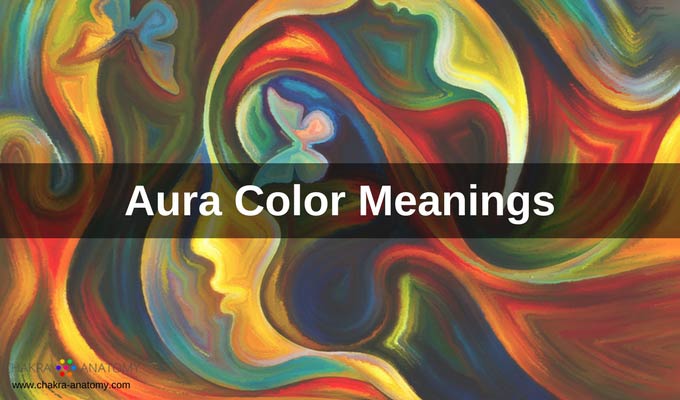
Meaning of Aura Colors
Learning to see Auras is easy, understanding and interpreting what you see is a bit more complex. Learning what different colors of Human Aura mean is a first step in this understanding.
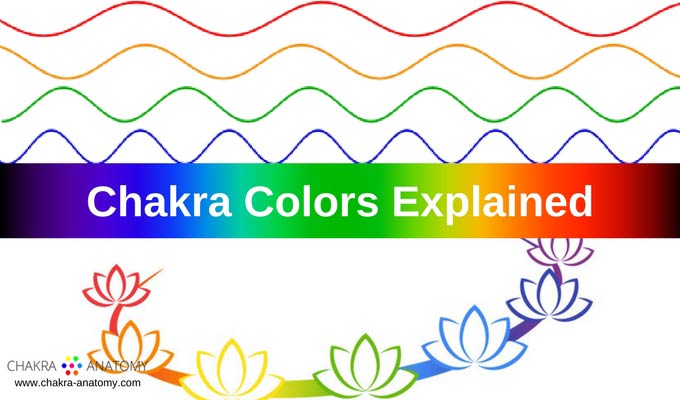
Chakra Colors in Depth
Explore the deeper meaning of color and its connection with your seven chakras. Learn about the science of color, how we see colors and delve into color psychology. Awaken your sense of self and re-connect with your soul.
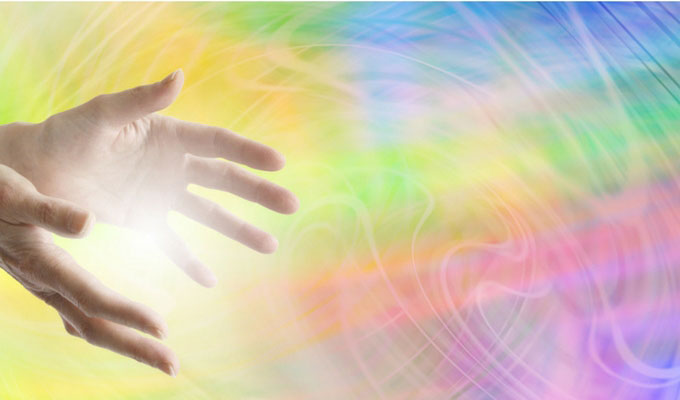
Reiki Self-Healing
All healing is self-healing. Tapping into the universal energy, we can use Reiki to heal our physical, emotional, and spiritual bodies. A gentle and safe method for holistic self-care, anyone can use Reiki energy for self-healing.
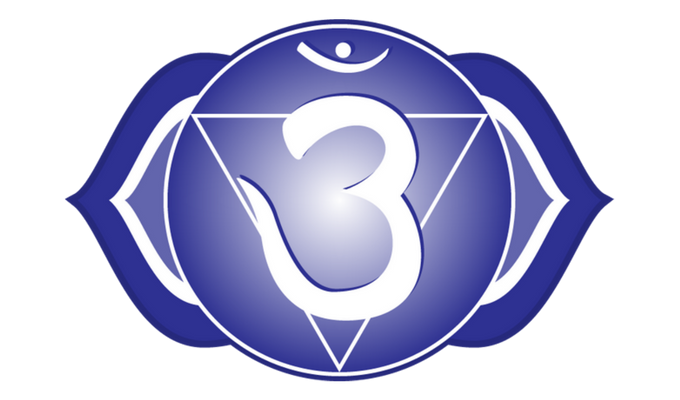
Third Eye Chakra
The Brow Chakra or Third Eye is the 6th chakra also known as Ajna chakra. The gift of this chakra is clear seeing. It is seeing beyond the physical form, beyond the frequencies of material world, seeing the subtle energies and higher vibrations. The energy of Ajna chakra allows us to access our inner guidance.
Stay connected! Subscribe to Chakra Wisdom eZine and
download a free Chakra Affirmations poster.
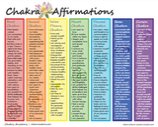
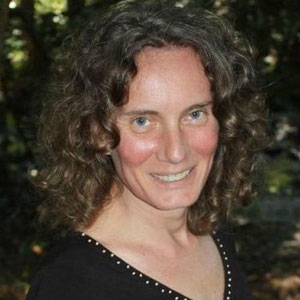
New! Comments
Do you have something to say about what you just read! Leave me a comment in the box below. I'd love to hear from you!